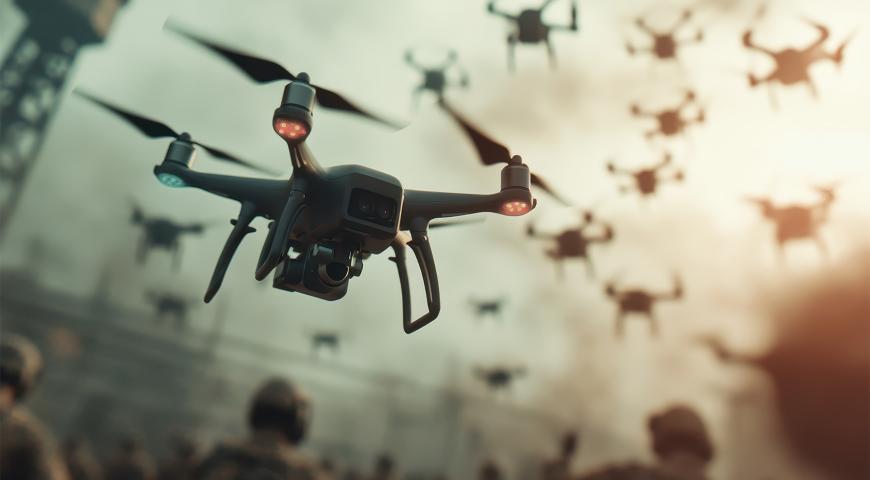In late 1964, Wally Blumenfeld carefully navigated his 62-metre long ship along Papua New Guinea’s Sepik River. Close to the border with West Irian, and more than 500km from the Sepik River’s mouth, this was the furthest that any sea-going ship had reached.1 What makes this story remarkable is that the Brudenell White was an Army ship, and Blumenfeld was an Army Captain.2
Army’s path to acquiring a sea-going tank-capable amphibious capability was a winding one. The catalyst was the Centurion tank’s 1952 introduction into service. At around 50 tons, the Centurion was heavier than its predecessors, and difficult to move by rail. An alternative was to move the tanks by sea, for which the Royal Australian Engineer (RAE) raised No.32 Small Ships Squadron.
That decision shifted the inter-service boundary of Army-Navy amphibious capability. By the end of the Second World War, the RAE operated a fleet of over 1900 watercraft to support training and operations in the South West Pacific. Although that capability included the 1,500-ton amphibious operations support ship AV 2767 Crusader, most were small boats or landing craft. The Army relied upon the US Navy for a tank-capable amphibious capability in operational areas.
In the immediate post-war period, the Royal Australian Navy (RAN) operated six sea-going, Landing Ship Tank (LST) Mark III, each capable of embarking a tank squadron. However, Army’s focus at that time was on establishing the Regular Army, which was stretched by commitments in Japan (1946-1952), Korea (1950-1953) and Malaya (1955-1961). That left little demand for amphibious warfare training. The most notable example of RAN support came in 1950 when the LST HMAS Labuan carried an RAE unit to the Solomon Islands for an explosive remnants of war task.
The RAN capability proved short-lived. The LST were quickly placed in reserve, and when the last vessel paid off in September 1951, neither the RAN nor Army maintained a sea-going, tank-capable amphibious capability for most of the next decade.
When the 1956 Suez Crisis put paid to a plan to acquire a British Landing Craft Tank, Army instead acquired four surplus US Navy World War II-era Landing Ship Medium (LSM) in 1959.3
These vessels soon proved invaluable to Army’s regional commitments. The LSMs’ ability to carry up to 306 tons, or four Centurions tanks also suited them to carrying heavy equipment and engineer plant, such as the 36 ton D8 Bulldozer. Their sea-going ability and endurance suited them for both inter-theatre operations. In addition to their service in Papua New Guinea, two LSM (Harry Chauvel and Vernon Sturdee) moved heavy engineer plant and equipment from Sydney to Borneo in 1964.
Their shallow-draft and ability to beach and un-beach suited them to coastal, inter-island, estuarine and riverine operations across South East Asia and the South West Pacific. In Papua New Guinea, the Brudenell White’s 26-day Sepik River mission was more than about setting records. The ship carried the aviation fuels needed to sustain helicopters undertaking survey operations in central and northeastern New Guinea.
In Vietnam, one LSM was usually available to provide intra-theatre transport to the 1st Australian Task Force around Bien Hoa, Nui Dat and Vung Tau. Pooling the LSM with US landing craft afforded the Australians with ‘more flexible water transport facilities than a single LSM could provide.’4 On 5 January 1969, the Clive Steele was hit by three B40 Rocket Propelled Grenades while in the Mekong Delta.5 Fortunately, there were no casualties amongst the crew.
To replace the ageing LSM, Army proposed to acquire a new vessel, the LSM Mark II.6 From 1969, the RAN argued that this ship’s capabilities exceeded Army’s responsibilities.7 Army reluctantly accepted this decision, and instead ordered eight new, Australian-designed and built Landing Craft Heavy (LCH), each capable of carrying up to three Leopard tanks or thirteen M113 Armoured Personnel Carriers.
By the early 1970s, the inter-service boundary shifted again. Army initially resisted a Chiefs of Staff Committee decision to transfer the LCH to the RAN.8 But in 1973 the Defence Minister directed that the LCH (except the Balikpapan which had already been delivered to Army) would commission directly into RAN. In 1974, L126 Balikpapan, which had been painted green, was transferred to the RAN as HMAS Balikpapan in 1974. That decision coincided with the transfer of watercraft responsibility from RAE to the newly-formed Royal Australian Corps of Transport. In 1975, two LCH transferred to the newly independent Papua New Guinea Defence Force.
In 1974-1975, RAN-operated LCH supported relief operations in Darwin in the aftermath of Cyclone Tracey. The LCH went on to support a range of ADF operations in Papua New Guinea (including OP BEL ISI, 1997-2003, OP CATHEDRAL in 2012), East Timor (INTERFET, 1999-2000, and OP ASTUTE, 2006), and the Solomon Islands (RAMSI, 2003-2004). The LCH’s utility across the region was further demonstrated when a third LCH was transferred to Papua New Guinea in 2014, followed by two other LCH to the Philippine Navy in 2015.
The LCH were augmented by the 1981 commissioning of the Landing Ship Heavy (LSH) HMAS Tobruk, which bore similarities to Army’s preferred design for the cancelled LSM Mark II project. But by 2015, both HMAS Tobruk and the remaining Balikpapan Class LCH had been retired from RAN service. Since that time, the Australian Defence Force (ADF) has been without an intermediate, tank-capable, sea-going amphibious capability, even though the LSM and LCH proved indispensable, both domestically and across the region.
Conclusion
Their combination of endurance, heavy-lift and sea-going capability, with the ability to navigate deep into large or small river systems placed the LSM in an intermediate capability class, between Army’s small watercraft and the RAN’s ocean-going ships. In a region characterised by long distances, littoral states with large inland waterways that substitute for poor transport infrastructure networks that are also vulnerable to natural disasters, and against the background of increasingly heavier military equipment, Army’s LSM and Navy’s LCH provided ADF commanders with an invaluable amphibious, sea, coastal and river-transport.

1. Phillip Greville, The Royal Australian Engineers, Vol IV: Paving the Way (Loftus, NSW: Australian Military History Publishing, 2002), 549.
2. Ibid., 549.
3. J.C. Laughlin, ‘Brief History of Army Small Ships’ in Australian Army Journal, No.118, March 1959, https://www.army.gov.au/sites/g/files/net1846/f/aaj_118_mar_1959.pdf (Canberra: Australian Army, 1959), 41. Also, Greville, op. cit., 378.
4. 1st Australian Logistic Support Group in Vietnam, General Survey of the Maintenance System operating to support 1 ATF (unpublished report: 1968).
5. B40 was the Vietnamese designation for the RPG-2.
6. Brian Alsop, Australian Army Watercraft: Australia's Unknown Fleet: From the Second World War to the present day (Marrickville: Topmill, 1996), 65.
7. Greville, op. cit., 397.
8. Albert Palazzo, The Australian Army: A history of its Organisation 1901-2001 (Melbourne: Oxford University Press, 2001), 305. Chief of Staff Committee Minute 56/1971 – Transfer of Landing Craft Heavy to the Royal Australian Navy.
Colour Photo by Graham Galliot circa 1964 posted on Flickr .
Please let us know if you have discovered an issue with the content on this page.
Comments
Start the conversation by sharing your thoughts! Please login to comment. If you don't yet have an account registration is quick and easy.




